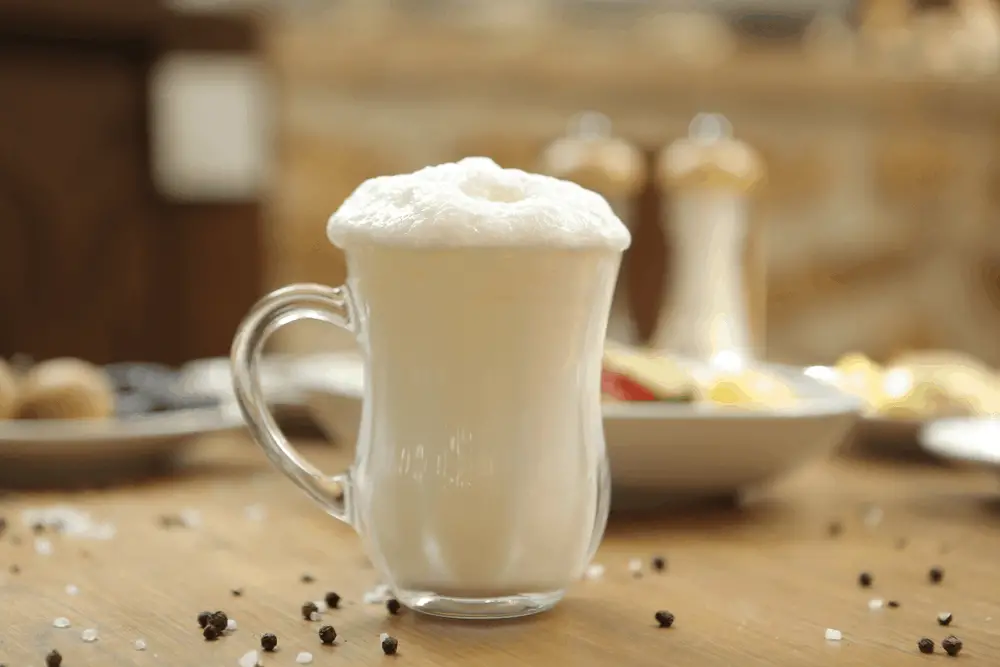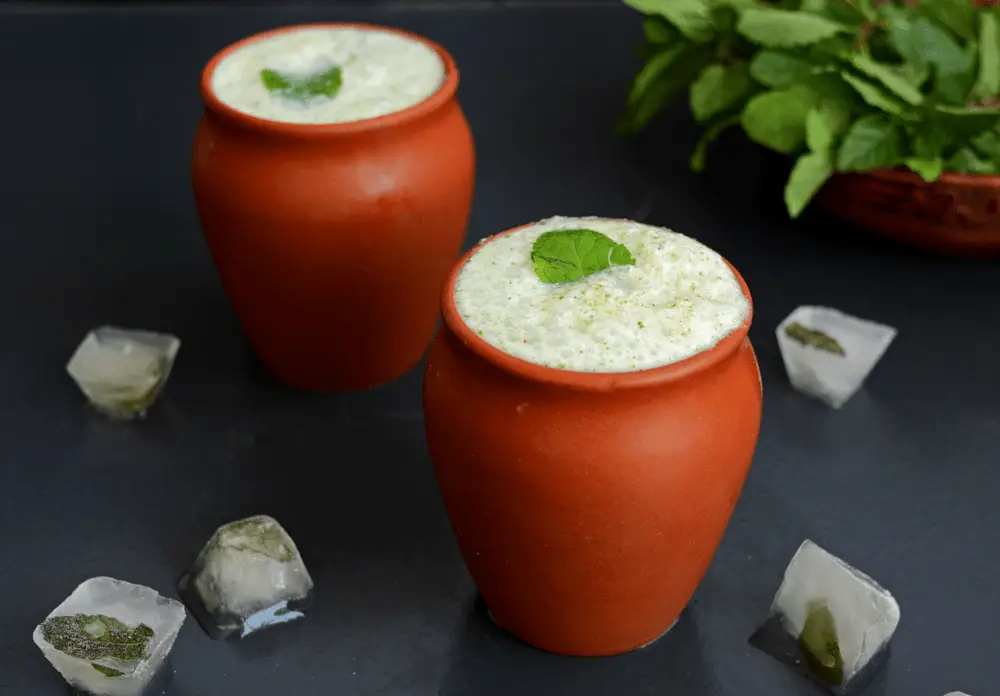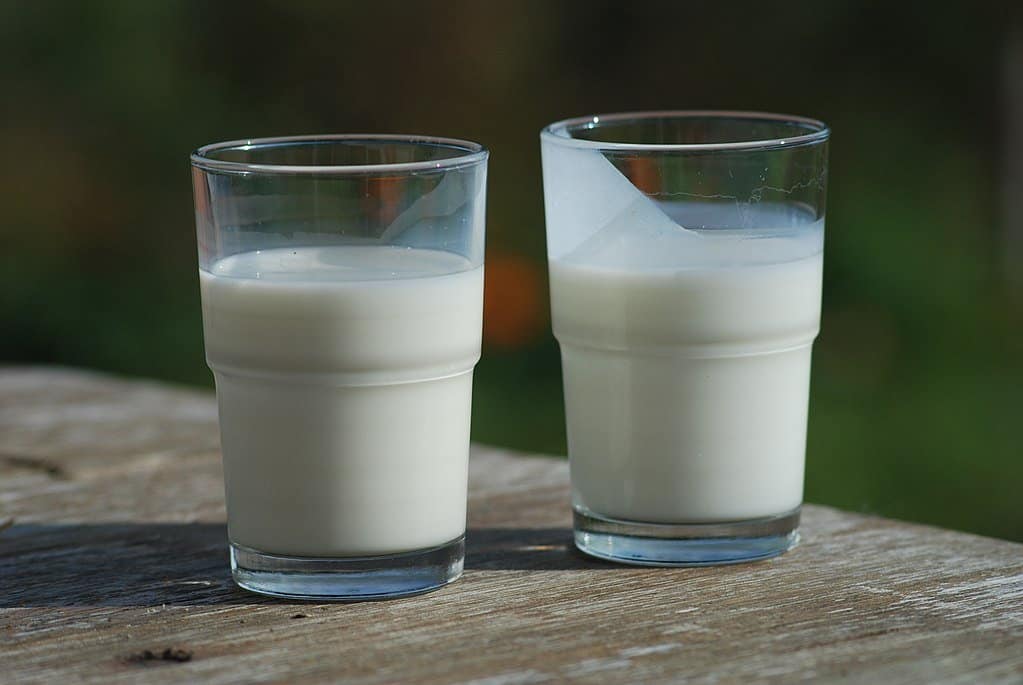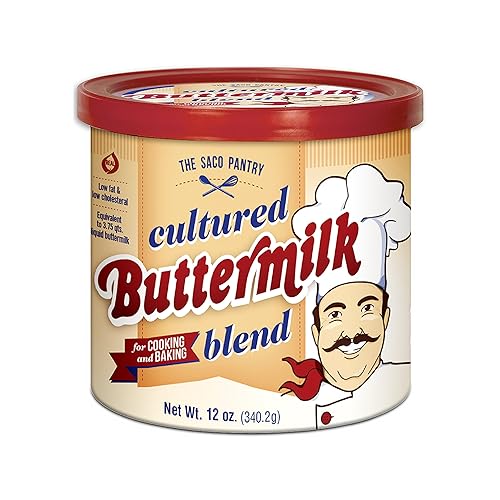Seriously, what does buttermilk taste like?
Even when you put in butter + milk together in one perfect solution, I’m sure you get mixed reactions and you get any of these statements:
- “Buttermilk does not taste like milk at all”
- “I don’t taste the ‘butter’ in buttermilk”
- “Why is it called ‘buttermilk’ when I can’t taste milk and butter?”
- “Isn’t the word ‘buttermilk’ misleading?”
The common reaction you get when you ask, “What does buttermilk taste like?”
These reactions are totally understandable because first off, buttermilk shouldn’t be simply seen as butter + milk combined in one mixture. Producing buttermilk is not as simple as getting a glass of milk and a cup of liquid butter, then combining them to form one chunk of “buttermilk” drink that you can enjoy direct from the glass.So to fill in your curiosities on what buttermilk really tastes like, let us first build the foundations and answer this most basic question:
What is Buttermilk?
Buttermilk is the liquid that remains after processing butter, and this process is called “churning.” This type of buttermilk is what we call “traditional buttermilk,” and is common in Southern Asia countries such as India, Nepal and Pakistan.

There is also another definition of buttermilk referring to an umbrella term for different fermented milk varieties. When seen with this definition, it is called “cultured buttermilk.” This type of buttermilk is common in temperate countries like Norway, Denmark, Finland, Sweden, Ireland, the Netherlands, Germany, Poland, Slovakia, Slovenia, Croatia, the Czech Republic; as well as in the Balkan areas that include Turkey, Greece, and Albania.
Although both buttermilk types are processed differently, they both exhibit the presence of Lactococcus lactis or Lactobacillus bulgaricus. As both variants of the lactic acid bacteria, this explains the high acidity of buttermilk compared to pasteurized milk, as well as the increased conversion of the milk sugar lactose into other proteins.
Because of buttermilk’s spread and popularity throughout the world, it has established its own local name in many countries’ vocabularies:
- Arabic / (الاسم) مخيض, لبن خض, المتبقي من الحليب بعد أخذ الزبدة : العربيه
- China / Chinese (simplified) / 中文(简体) : 酪乳, 白脱牛奶
- China / Chinese (traditional) / 中文(繁體) : 酪乳, 白脫牛奶
- Denmark / Dansk / Danish: kærnemælk
- France / Français: babeurre
- Germany / German / Deutsch: buttermilch
- Greece / Greek / Ελληνική: βουτυρόγαλα
- India/ Indian: chaas, chaach
- Italy / Italian / Italiano: latticello, siero di latte
- Japan / 日本語: バターミルクKorea / 한국어 : 버터 밀크
- Poland / Polish: maślanka
- Portugal / Portuguese / Portugués: leitelho
- Holland, the Netherlands / Dutch / Nederlands: karnemelk
- Russian / Русский : пахта
- Spain / Spanish / Español: suero de la leche
- Sweden / Swedish / Svenska: kärnmjölk
How is Buttermilk Made?
Traditional Buttermilk
Traditional buttermilk is produced through churning of butter. The process goes through three major steps:
1. Full fresh whole milk is placed in a large bowl or jug and left to sit for some days to give time for the milk and cream to separate.
2. Once separation is complete, cream is taken then churned using a plunger.
3. Once churning is complete, you are able to enjoy two essential cooking and baking ingredients: butter and buttermilk.
Cultured Buttermilk
Producing cultured buttermilk is more straightforward as lactic acid bacteria culture (either Lactococcus lactis or Lactobacillus bulgaricus) is added to the milk. All commercially available buttermilk uses this culturing process for manufacturing.
What Are the Benefits of Buttermilk Intake?
By the sounds of it, buttermilk can sound scary when we talk of it on a health-perspective. But fear not! Not only is buttermilk low in fat (0.9 grams only), it’s also low in carbohydrates (4.8 grams), high in protein (3.3 grams) and high in calcium (116 milligrams). Buttermilk also has by far a lower fat content than pasteurized milk.

Buttermilk’s Health Benefits:
- Buttermilk is not only rich in protein and calcium, it is also rich in phosphorus (218 mg), an important nutrient for nerve function; and also in potassium (370 mg), an important nutrient that keeps the heart healthy.
- Because of buttermilk’s higher acidity and its lactose sugar already fermented, it is good for people with lactose intolerance.
- You get healthy bacteria that’s good for digestion.
- Buttermilk raises your metabolism; thus, is good in keeping a balance with your cholesterol levels and your body’s circulation.
- Buttermilk is good for your skin as it is known in India to be effective in fighting off acne.
What Does Buttermilk Taste Like?
In general, buttermilk tastes tarty—the liquid, smoother-than-yogurt kind, with a mix of sour and slightly bitter aftertaste. This depends on the process of making it, and these days, it highly depends on the brand you’re having.
Here is a video of a group of friends trying buttermilk for the first time. It is not surprising to have this reaction especially when they’ve never tried pure buttermilk either in liquid or solid forms:
But to give you a better eye-view, we are trying different commercial brands to see how they differ in terms of taste. Turns out, there is a huge difference depending on what brand you go for.
Buttermilk Taste Test
Now, let’s do a taste test. We used the following parameters to test out different store-bought buttermilk brands:
- Flavor: Does it balance out the sour taste tanginess with the sweetness?
- Texture: Is it creamy and smooth?
- Freshness: Is it refreshing enough after the first sip?
Buttermilk Brand #1: Bob’s Red Mill
Bob’s Red Mill is popular for its healthy and gluten-free products and has since been a reputable brand given its four decades in the buttermilk business. On the label, it says there is zero sodium, and it has very low calories at 18 calories per 100ml serving. As for the taste, it is smooth and flavorsome; although it has more of its churn, which makes it a bit uncomfortable to drink for first-timers.
Buttermilk Brand #2: Danone
Danone is a global brand based in Paris, France. It aims to penetrate not just the European market, but also the American, Asian, African and Pacific markets. While the Danone buttermilk brand has the lowest calories compared to its competitors, its sodium content is quite high at 235 mg. As for taste, it isn’t balanced at all. The solution has a lot of liquid in it, removing the thick texture that makes buttermilk unique. It tastes like yogurt drink with a lot of water added into it.
Buttermilk Brand #3: Nestlé
Just like Danone, Nestlé is a global brand that has been successful in reaching European, American, Asian, African, and Pacific markets. Although successful in many of its products, its buttermilk needs a bit more tweaking: the flavor is unbalanced, and it doesn’t taste naturally fresh. It tastes and smells like yogurt gone bad, so it is not the brand of choice for first-time buttermilk takers.
Buttermilk Brand #4: Saco
Saco Culture Buttermilk is popular for cooking and those who love the full cream taste. It is very high in calories, making the flavor really full. However, it is a bit unbalanced and the flavor is so overpowering, making you not want to drink beyond two tablespoons. It is like drinking milk with a lot of coconut oil in it, so the experience of taste enjoyment is very short-lived.
Buttermilk Brand #5: Hoosier
The Hoosier buttermilk is one of the least acidic of all brands. It has a friendly balance of flavors and texture, and taking it proves to be an enjoyable experience for first-time buttermilk drinkers. It is also surprisingly very refreshing. It feels like drops of lemon juice have been placed to make it appealing for all sorts of tastes. The only drawback is its does not last long, so make sure you put it in the fridge and consume within one week.
How is Buttermilk Taste Different from “Normal” Milk?
To give you an idea, here is a photo of a glass of buttermilk and “normal” pasteurized milk placed side-by-side:

Ukko-wc [GFDL (https://www.gnu.org/copyleft/fdl.html) or CC BY-SA 3.0 (https://creativecommons.org/licenses/by-sa/3.0)], from Wikimedia Commons
Notice that buttermilk looks thicker, denser and more packed compared to pasteurized regular milk. Turns out, looks can say a lot. Here is a comparison chart of the differences between buttermilk and pasteurized milk:
Cooking with Buttermilk
Want to know the easiest way to make real buttermilk? Homemade buttermilk can be made by taking milk and avoid low-fat milk, it doesn’t work as well. Then add an acid like lemon juice (this gives it the tangy taste) and leave at room temperature. The fermentation process takes 12-24 hours. The longer you wait the thicker texture this milk product gets, the bacterial culture starts to change the consistency of the milk. It will have a tangy smell which is normal Now you have your own buttermilk! Place fresh buttermilk the fridge, the shelf life of buttermilk is about a month before reaching the expiration date. Bad buttermilk will have a rancid overpowering sour flavor.
Buttermilk is great for lots of recipes. Some use to try is making salad dressings, buttermilk ranch combines the tangy flavor of the milk with seasonings. add a cup of buttermilk, cup of sour cream, and add your seasonings, Another great recipe is buttermilk pancakes. Take your leftover buttermilk and combine it with a flour mixture. This is the best way to make pancakes, they come out fluffy and flavorful everytime. This recipe works well with many types of buttermilk.


